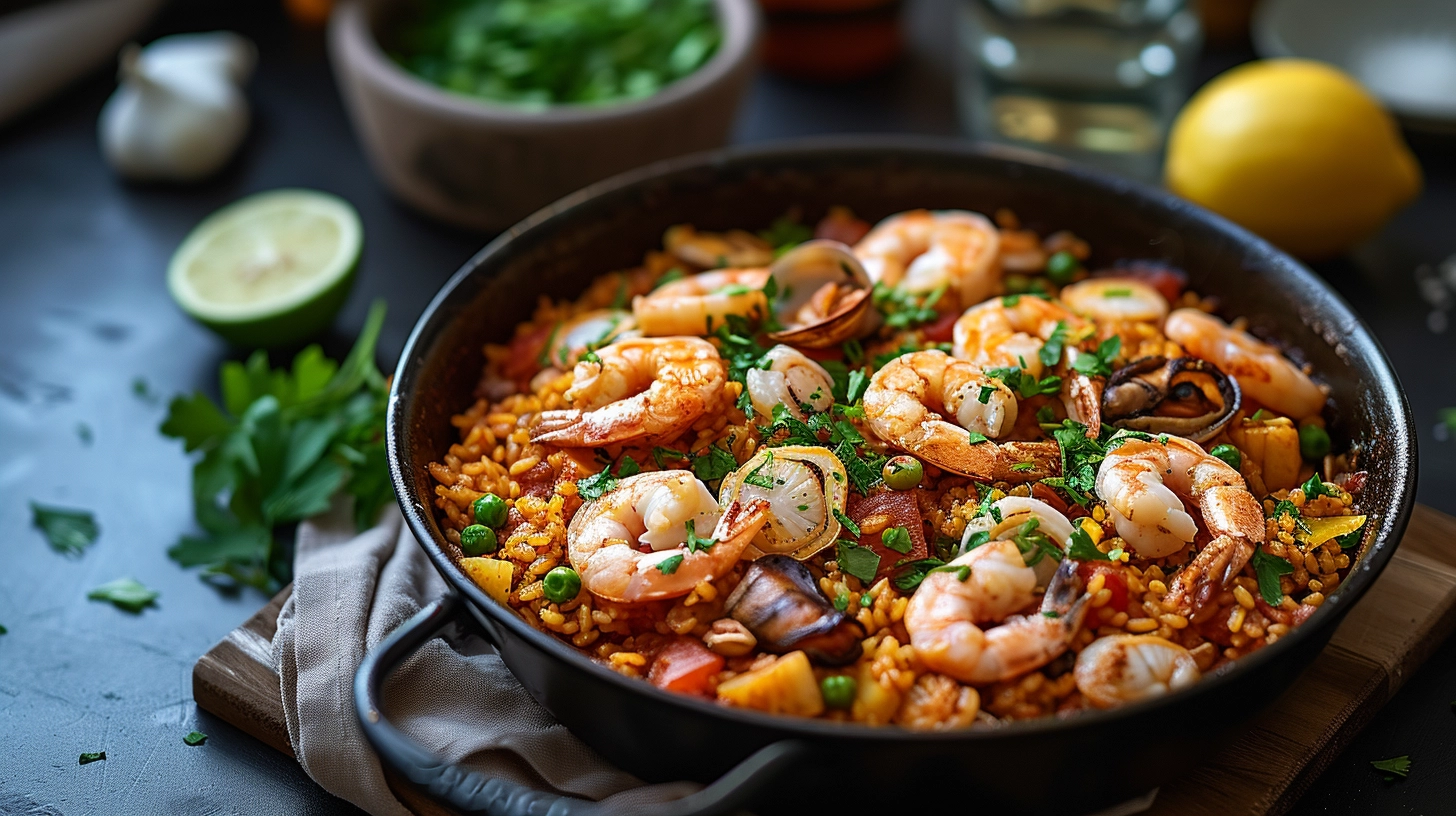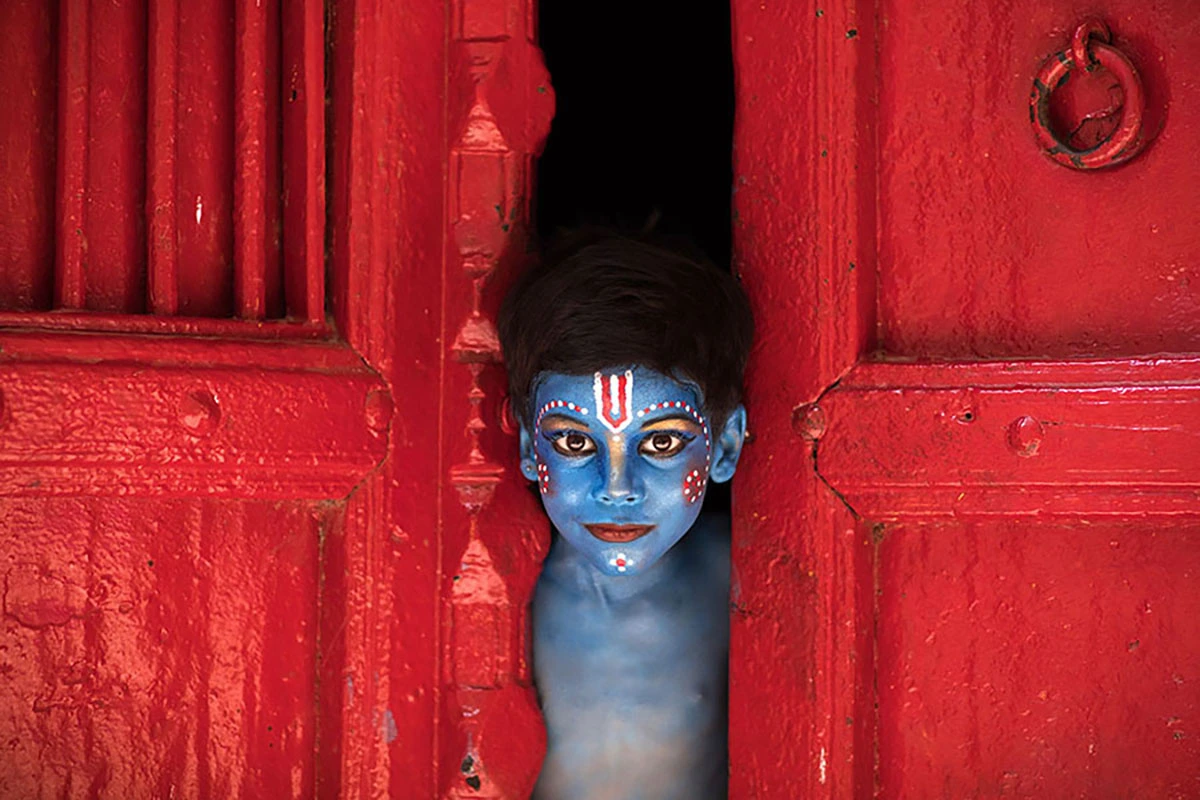Paella, Spain’s revered dish, is a symphony of flavors, textures, and colors, celebrated worldwide for its ability to bring people together. Originating from Valencia, paella is a testament to the rich culinary heritage of Spain, blending the best of land and sea into a single, delectable meal.
The Origins of Paella
Understanding paella begins with its humble origins. Initially a meal for farmers and laborers cooked over an open fire in the fields, paella has evolved into a global symbol of Spanish cuisine. The traditional ingredients reflect the fertile lands of Valencia, combining rice, green beans, rabbit, chicken, and sometimes snails, cooked in a large, shallow pan known as a linetogel ‘paellera.’
Essential Ingredients for Authentic Paella
The soul of paella lies in its ingredients. High-quality, short-grain rice like Bomba or Calasparra is crucial, as it absorbs the flavors while maintaining its texture. Saffron, the spice that gives paella its characteristic golden hue and unique flavor, is non-negotiable. A proper paella also includes a rich stock, fresh seafood or meats, and a variety of vegetables.
Mastering the Techniques of Paella
The art of making paella lies not just in the ingredients but in the technique. Achieving the coveted ‘socarrat,’ the crispy layer of rice at the bottom of the pan, is a sign of a well-made paella.
The Perfect Base: Sofrito
Every great paella starts with a sofrito, a blend of onions, tomatoes, and sometimes peppers, cooked down to a rich, flavorful paste. This foundation adds depth and richness to the dish, setting the stage for the layers of flavor to come.
Cooking with Precision
Paella requires patience and precision. Unlike risotto, it’s not stirred often, allowing the rice to cook evenly and form the socarrat. Cooking over an even, controlled heat source, whether it’s an outdoor fire or a stovetop, ensures that each ingredient melds together harmoniously.
Flavor-Packed Paella Recipes

While the Valencian paella remains the most traditional, variations across Spain and the world have given rise to a multitude of recipes, each with its own character.
Seafood Paella
Brimming with the bounty of the sea, seafood paella replaces meats with a generous assortment of shrimp, mussels, clams, and sometimes lobster. The key is to add the seafood at the right time to ensure everything is perfectly cooked.
Mixed Paella (Paella Mixta)
A popular variant that combines meats and seafood, offering the best of both worlds. Chicken, rabbit, or chorizo provide a meaty base, complemented by a variety of shellfish and sometimes vegetables.
Vegetarian Paella
A feast for the eyes and the palate, vegetarian paella swaps out meats and seafood for a colorful array of vegetables. Bell peppers, artichokes, peas, and beans bring freshness and vibrancy to the dish, making it a delightful option for vegetarians and vegans alike.
The Final Touch: Serving Your Paella
Paella is more than just a meal; it’s an experience. Traditionally served straight from the pan, it encourages communal eating, inviting everyone to share in the bounty. Pairing your paella with a chilled glass of Spanish white wine or a light, fruity sangria can elevate the meal to new heights.
Celebrating Paella’s Global Appeal
Paella’s journey from the fields of Valencia to the global stage is a testament to its universal appeal. Its ability to adapt, incorporating local ingredients and preferences, has made it a beloved dish worldwide. Whether you’re a seasoned chef or a home cook, mastering paella offers a rewarding and delicious way to connect with Spain’s culinary traditions. By embracing the techniques and recipes shared here, you’re well on your way to achieving paella perfection, bringing a taste of Spain into your kitchen and hearts.
Paella: A Reflection of Regional Diversity
While the Valencian paella is often hailed as the most authentic or traditional form, Spain’s regional diversity means that paella varies greatly across the country. This variation is not just in the ingredients but also in the cultural significance and preparation methods. For instance, in coastal regions, you’ll find an abundance of seafood paellas, which reflect the local catch, while inland versions might lean more heavily on meats and vegetables available in those areas.
The Socarrat: Paella’s Coveted Prize
A key element in the discussion of paella perfection is the socarrat, the crispy, caramelized crust of rice that forms at the bottom of the pan. Achieving the perfect socarrat is a skill that requires not just the right heat and timing but also an understanding of how the rice interacts with the ingredients and the pan. It’s a testament to the cook’s prowess and is highly sought after by paella enthusiasts.
The Paella Pan: More Than Just a Cooking Vessel
The traditional paella pan, or paellera, plays a crucial role in the cooking process. Its wide, shallow design allows for maximum surface area, ensuring even cooking and optimal evaporation of the liquid. This design is crucial for achieving the socarrat and allows for the even distribution of ingredients, ensuring that each serving is a harmonious blend of flavors and textures.
Paella Beyond Spain: A Global Delight

As paella has traveled the world, it has been embraced and adapted by various cultures, each adding their own twist to this classic dish. From the incorporation of local seafood in coastal regions of the United States to the use of spices and ingredients that reflect the culinary heritage of countries in South America and Asia, paella has proven to be a versatile and adaptable dish that resonates with a wide array of palates.
Sustainable and Seasonal: The Modern Paella
In recent years, there’s been a movement towards more sustainable and seasonal versions of paella. Chefs and home cooks alike are focusing on locally sourced ingredients, seasonal vegetables, and sustainable meats and seafood, reflecting a global shift towards more conscious eating habits. This approach not only enhances the flavor and nutritional value of the paella but also aligns with environmental values, making it a dish that is both delicious and responsible.
Paella Parties: Bringing People Together
One of the most beautiful aspects of paella is its ability to bring people together. Cooking paella is often a communal activity, enjoyed outdoors and shared among family and friends. This social aspect of paella preparation and consumption harks back to its origins and continues to be a defining characteristic of the dish. Whether it’s a casual family gathering or a festive celebration, paella is a dish that celebrates community and the joy of shared meals.




